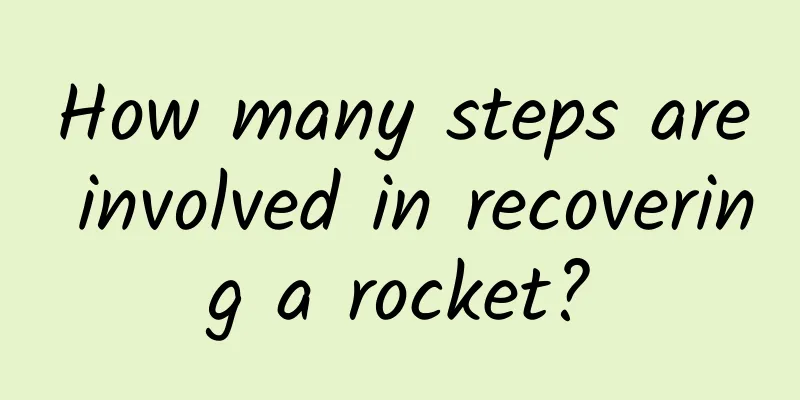Can low GI foods really help you lose weight? Find out the truth in this article!

|
The ten pounds lost in the summer have not been lost yet, and it’s time to put on weight in the fall again! Many people who can't control their mouths and can't move their legs have turned their attention to the popular "low GI diet". This weight loss method claims that one can easily lose weight by eating only certain low GI foods. So, what are low GI foods? Are low GI foods really good for health? Can a “low GI diet” help you lose weight? 1. What is GI? GI, or the Glycemic Index, is a measure of the effect of carbohydrates in food on blood sugar. It is based on how blood sugar levels change after food is consumed. The GI ranges from 0 to 100, with pure glucose being defined as 100, and other foods being classified accordingly based on their effect on blood sugar. In simple terms, it tells us whether our blood sugar will rise rapidly after eating a certain food. If a food has a high GI, it means that blood sugar will rise rapidly after eating it, and then drop rapidly, like a hill. Low GI food is like a stable slope. After eating it, blood sugar rises relatively slowly and lasts longer, without causing sharp fluctuations. Image source network By understanding the GI of food, we can better choose foods that are good for our health, control blood sugar, enhance satiety, avoid overeating, and help control weight. 2. How are the GI values of foods graded? The GI value of food can be divided according to the degree to which it affects blood sugar levels. It can generally be classified according to the following levels: 01 Low GI foods (0-55) These foods cause blood sugar to rise more slowly, which helps maintain blood sugar stability. Common low GI foods include most vegetables (such as peas and carrots), most fruits (such as apples and pears), oats, whole wheat bread, etc. 02 Medium GI foods (56-69) These foods cause a moderate increase in blood sugar. Some of these foods may be appropriate choices in diabetes management. Common medium GI foods include white rice, pasta, some fruits (such as bananas, grapes), sweet potatoes, etc. 03 High GI foods (70 and above) These foods can cause blood sugar to rise faster and require more insulin to process. These foods are usually not suitable for diabetics and may also cause energy to be released quickly and then feel hungry soon. Common high GI foods include refined pasta, white bread, candy, potato chips, sweet drinks, etc. It should be noted that the GI value of food is affected by many factors, including the ingredients, processing methods, cooking methods, etc. The GI value of the same food may be different under different circumstances. Therefore, when choosing food, in addition to considering its GI value, its overall nutritional value and impact on health should also be considered comprehensively. 3. What are some common low GI foods? 01 vegetable Most vegetables are low GI foods, especially green leafy vegetables (such as spinach, lettuce, cauliflower), carrots, legumes (such as peas, bean sprouts), broccoli, etc. 02 fruit Although some fruits are sweeter, there are still many low GI foods, such as apples, pears, oranges, strawberries, blueberries, peaches, etc. 03 Whole grains Whole-wheat bread, whole-wheat pasta, oatmeal, etc. are all low-GI foods because they are rich in fiber and help slow down the rise in blood sugar. 04 Beans Legumes such as black beans, mung beans, and lentils are low GI foods and are rich in protein and fiber. 05 Nuts and seeds Nuts and seeds such as almonds, walnuts, peanuts and flax seeds are low GI foods and are rich in healthy fats and fiber. 06 Some dairy products For example, Greek yogurt, sour milk, etc. Although their GI values are low, be careful to choose sugar-free or low-sugar products. 4. What are the health benefits of low GI foods? 01 Stabilize blood sugar levels Low GI foods cause blood sugar to rise slowly after ingestion and then last longer. This helps avoid dramatic blood sugar swings, which is especially important for diabetics and those who need to control blood sugar. 02 Weight control Low GI foods provide long-lasting energy and make you feel fuller for longer, reducing the need to eat more frequently. This helps control the total number of calories consumed, thereby helping to manage weight. 03 Slows digestion Low GI foods are usually rich in dietary fiber, which can slow down the digestion of food in the gastrointestinal tract. This helps maintain intestinal health and reduces the occurrence of constipation. 04 Increase satiety Since low GI foods digest more slowly, they make you feel fuller for longer, making you less likely to overeat. 05 Provides stable energy The carbohydrates in low GI foods are released more steadily, providing long-lasting energy, making them suitable as an energy source for prolonged energetic activities. 06 Promotes cardiovascular health Low GI foods help control blood sugar and insulin levels, which is important for cardiovascular health. They are also generally high in dietary fiber, healthy fats, and antioxidants, which are also beneficial to the cardiovascular system. 07 Preventing diabetes Low GI foods can help prevent the onset of diabetes, especially type 2 diabetes. By controlling blood sugar fluctuations and reducing the release of insulin, the risk of diabetes can be reduced. 5. A big misunderstanding! Eating low GI foods will definitely help you lose weight Low GI ≠ low calories! Some nuts, healthy oils and high-fat foods may have a low GI value, but their energy density is high, and consuming too much may reverse your weight loss goals. Although low GI foods are beneficial for maintaining stable blood sugar, providing long-lasting energy and promoting health, weight loss does not rely solely on eating low GI foods. Successful weight loss requires a comprehensive consideration of the balance of calorie intake and expenditure, food types, dietary diversity, dietary quality and exercise. Even if you eat low GI foods, if the total calorie intake exceeds the body's consumption, it may still lead to weight gain. In addition, the type and quality of food are equally important. Excessive intake of high-energy-density food will still hinder weight loss. Maintaining a balanced and diverse diet, reasonably controlling calories, and combining appropriate exercise are the effective ways to achieve healthy weight loss. Conclusion In general, low GI foods play an important role in maintaining blood sugar stability, controlling weight, promoting health and preventing diseases. However, we must also realize that weight loss and health are not determined by the efficacy of a single food. Reasonable calorie control, a diverse diet, moderate exercise, and a correct lifestyle are the keys to maintaining weight and health. Introducing low GI foods into your diet is a good choice, but what is more important is to cultivate healthy and scientific eating habits to add points to your body's health management! References: [1]Argiana V, Kanellos Τ P, Eleftheriadou I, et al. Low-Glycemic-Index/Load Desserts Decrease Glycemic and Insulinemic Response in Patients with Type 2 Diabetes Mellitus[J]. Nutrients, 2020, 12(7). [2]Pavithran N,Kumar H,Menon SA, et al. The Effect of a Low GI Diet on Truncal Fat Mass and Glycated Hemoglobin in South Indians with Type 2 Diabetes—A Single Center Randomized Prospective Study[J]. Nutrients,2020,12(1). [3] Zhang Zhuoqiong, Guo Jun. Research, development and application status of low glycemic index foods[J]. Food and Fermentation Industries, 2023, 49(01): 313-320. DOI: 10.13995/j.cnki.11-1802/ts.032846. [4] Chang Le. Research progress of low GI cereal foods[J]. Grain and Oils, 2022, 35(10): 5-8. [5] Li Duan, Yi Tu. Low GI diet may significantly improve diabetes[J]. Health Care for the Middle-aged and Elderly, 2021(10):9. Author: Xiaojuan is not a volume Master of Food Science and Engineering, Henan University of Technology Image source: pixabay |
<<: The ultimate battle: the battle between humans and infectious diseases never stops
Recommend
How to get traffic from Tik Tok live streaming
In this article, we will analyze in detail the me...
Product traffic methodology: How to find your precise users?
There are many people who have learned many metho...
SEM data analysis method, summary of SEM data analysis!
For those who are new to SEM bidding, how can the...
An interface was launched in 4 hours, and the practice of Ctrip's efficient and unified hotel data service platform was realized
Author: Xiao Feng, R&D Director of Ctrip, fo...
Li Zhongying's video lecture on "Children's Learning Ability and Effect"
Course Contents: 01. Mental state 01.What can par...
Analysis of the Ultimate Pattern of Television Internetization
1. Industry trends of the Internet The PC Interne...
This kind of "fly" can not only be caught by hand, but also eaten
If there is a kind of "fly" that is lar...
Look at these "pearls" that only appear in the early morning: How is dew formed?
Produced by: Science Popularization China Author:...
K12 education industry promotion and drainage plan
1 Project Background Children's English learn...
Why doesn't the radiation from Chernobyl kill the plants there?
Chernobyl - site of the worst nuclear power disas...
Inventory of plants that are mispronounced | Tamarix and Polygonum multiflorum: The names are too weird, and if you recognize half of them, you are bound to be mispronounced
Many names of trees follow the rules of phono-sem...
IIC: Industrial Internet of Things Artificial Intelligence Framework White Paper
Industrial AI (AI), the application of artificial...
How to make valuable competitive product analysis?
1. Why do we need to do competitive product analy...
If you don't use an air fryer, you will regret it!
When was the last time you used an air fryer? The...
WeChat JS-SDK Description-Open Interface Description (2)
Hide the upper right corner menu interface wx.hid...









